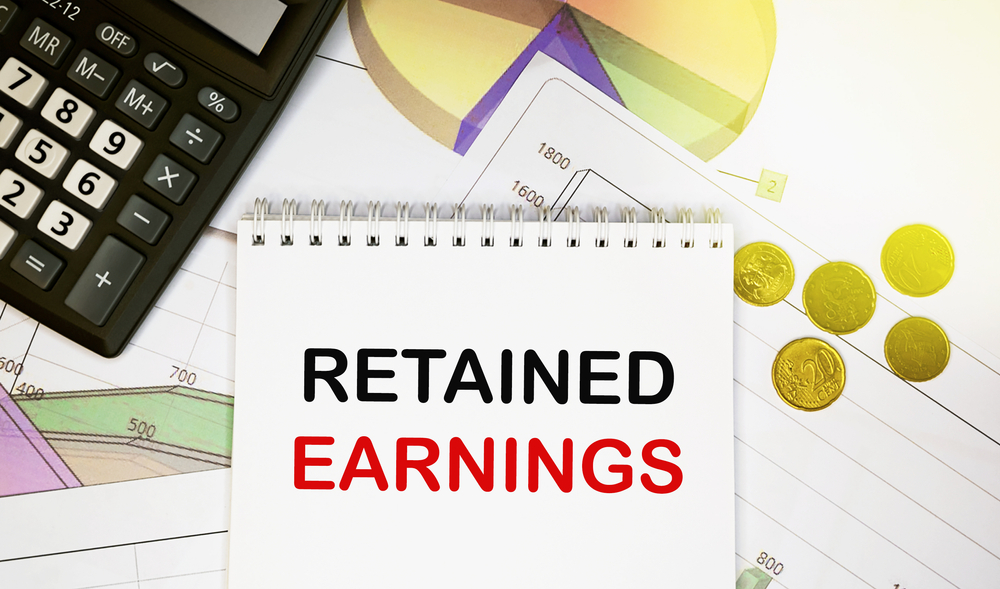What Is the Statement of Retained Earnings?
A statement of retained earnings is a financial statement that provides important information about a company’s retained earnings over a specific accounting period.
Key takeaways
It bridges the gap between the income statement and balance sheet by explaining how a company’s profits are either reinvested in the business or distributed to shareholders.
It typically includes the opening balance of retained earnings, net income or loss for the period, dividends paid, and the closing balance.
This statement provides insights into a company’s profitability, dividend policy, and how much profit is reinvested for growth.
Investors and analysts use it to assess the company’s financial health and management’s decisions regarding profit allocation.
It is an integral part of a company’s set of financial statements, along with the balance sheet, income statement, and cash flow statement. In this comprehensive explanation, we will delve into the various aspects of the Statement of Retained Earnings, what it includes, its importance, and how it is prepared.
Purpose and importance of a statement of retained earnings:
The primary purpose of a statement of retained earnings is to disclose changes in a company’s retained earnings over a specific time frame, usually a fiscal year. Retained earnings represent the cumulative profits a company has earned since its inception, minus any dividends or distributions made to shareholders.
This statement helps stakeholders, including investors, creditors, and management, understand how a company’s earnings have been reinvested or distributed during the reporting period.
The statement of retained earnings serves several crucial functions:
Track earnings retention: It provides a historical record of how a company has managed its earnings over time. This can be useful for assessing management’s strategies and decisions regarding reinvestment or distribution of profits.
Dividend decision support: It helps management and shareholders make informed decisions regarding dividend distributions. If a company has a significant amount of retained earnings, it may indicate that it has the capacity to pay dividends to shareholders.
Investor confidence: Shareholders and potential investors use the SRE to gauge the financial health and stability of a company. A consistent increase in retained earnings may indicate growth and stability, while consistent decreases may raise concerns.
Lender assessment: Creditors and lenders may review the SRE to assess a company’s financial strength and capacity to repay loans. Adequate retained earnings can enhance a company’s creditworthiness.
Internal decision-making: Management uses the Statement of Retained Earnings as a tool for financial planning and decision-making. It helps in determining how much profit can be reinvested in the business for growth or expansion.
Components of a statement of retained earnings:
A typical statement of retained earnings includes several key components:
Beginning retained earnings: This is the balance of retained earnings at the beginning of the reporting period. It is carried over from the previous fiscal year’s SRE or from the company’s inception if it’s the first statement prepared.
Net income (or loss): The net income for the current accounting period is added to (or subtracted from) the beginning retained earnings. Net income is the total revenue generated minus all expenses and taxes for the period.
Dividends: If dividends are declared and paid to shareholders during the reporting period, this amount is subtracted from the beginning retained earnings and the net income. Dividends represent the portion of profits distributed to shareholders.
Adjustments: Occasionally, there might be adjustments that impact retained earnings, such as accounting changes, corrections of prior-period errors, or reclassifications. These adjustments are recorded in this section.
Ending retained earnings: The ending retained earnings are calculated by summing up the beginning retained earnings, net income, and any adjustments, and then subtracting dividends. This figure represents the final balance of retained earnings at the end of the reporting period.
Preparation of a statement of retained earnings:
The process of preparing a Statement of Retained Earnings involves several steps:
Gather financial data: Collect financial data, including the balance sheet, income statement, and any other relevant financial information, for the reporting period.
Calculate beginning (retained earnings): Take the retained earnings balance from the previous period’s SRE, or if it’s the first statement ever prepared, use the accumulated retained earnings from the company’s inception.
Add net income: Calculate the net income for the current period by subtracting expenses and taxes from total revenue. Add this amount to the beginning retained earnings.
Subtract dividends: If dividends were declared and paid during the reporting period, subtract this amount from the accumulated total.
Include adjustments: Account for any adjustments that affect retained earnings, such as accounting changes or prior-period errors.
Calculate ending (retained earnings): Sum up the beginning retained earnings, net income, and adjustments, and then subtract dividends to arrive at the ending retained earnings.
Prepare the statement: Organize the information in a clear and concise format. The statement typically includes the reporting period, the components mentioned above, and the final calculation of ending retained earnings.
Common questions and considerations:
What happens if retained earnings are negative?
Negative retained earnings indicate that a company has accumulated more losses than profits over time. It may signal financial difficulties or past financial mismanagement.
How do retained earnings impact stockholders’ equity?
Retained earnings are a significant component of stockholders’ equity on the balance sheet. They represent the portion of earnings that have not been distributed to shareholders.
Are retained earnings taxed?
Retained earnings are not taxed separately. However, when they are distributed to shareholders as dividends, shareholders may be subject to taxes on those dividend payments.
Can retained earnings be negative?
Yes, retained earnings can be negative if a company has incurred cumulative losses over time. It’s not uncommon for startups or companies in distress to have negative retained earnings.
What Is the difference between retained earnings and net income?
Net income is the profit a company earns in a specific period, while retained earnings represent the cumulative total of earnings retained in the company over its lifetime.
Conclusion
The Statement of Retained Earnings is a vital financial statement that provides insight into a company’s retained earnings over a specified period. It plays a crucial role in financial reporting, helping stakeholders assess a company’s financial health, dividend policy, and overall performance.
By tracking changes in retained earnings, investors, creditors, and management can make informed decisions about the company’s financial strategies and future prospects. Understanding the components and purpose of the Statement of Retained Earnings is essential for anyone involved in financial analysis or decision-making related to a business entity.
The post What Is the Statement of Retained Earnings? appeared first on FinanceBrokerage.


































